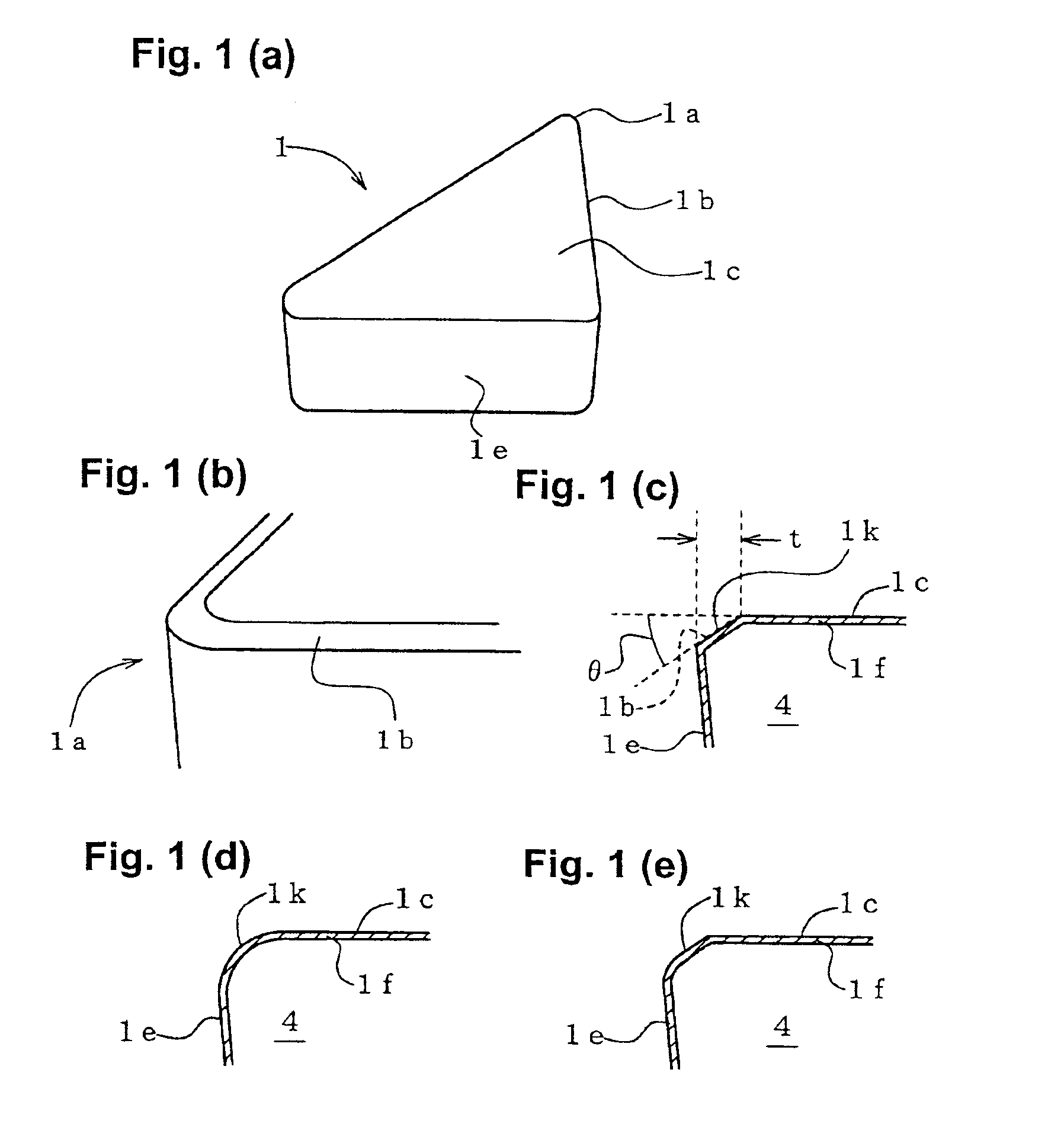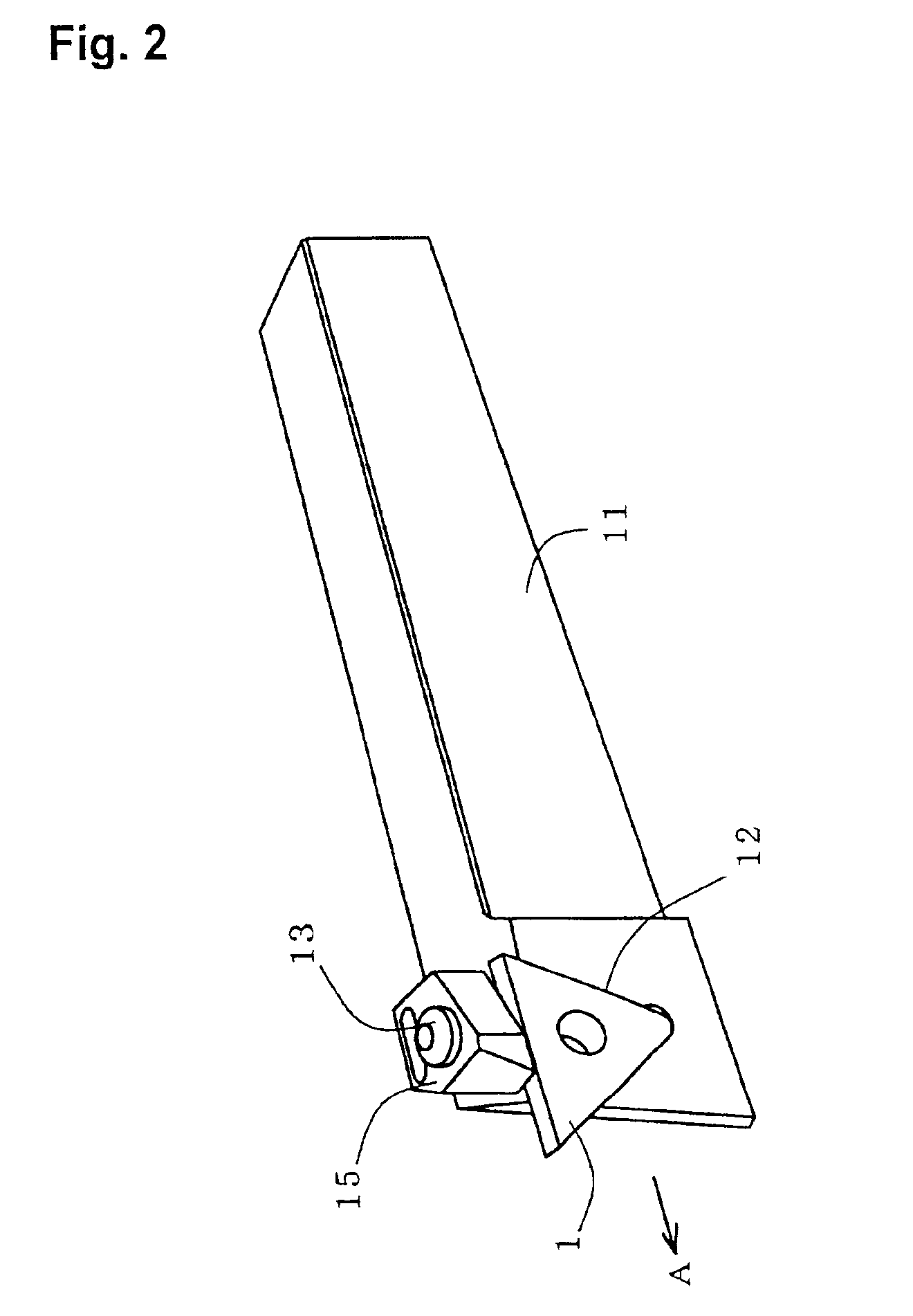Cutting tool
a cutting tool and tool body technology, applied in the field of cutting tools, can solve the problems of short service life and poor reliability, inability to withstand a further increase in cutting speed, and low machining efficiency of grinding, and achieve the effect of secure stable cutting performance and low cos
- Summary
- Abstract
- Description
- Claims
- Application Information
AI Technical Summary
Benefits of technology
Problems solved by technology
Method used
Image
Examples
Embodiment Construction
[0036]FIG. 1 depicts one embodiment of the ceramic cutting tool of the present invention and shows a throw-away tip (hereinafter simply referred to as a “tip”) 1, serving as a tool main body of the cutting tool. As shown FIG. 1(a), the tip 1 has a structure such that the entire outer surface of a ceramic base member 4 formed in the form of a flat, substantially rectangular prism is covered with a coating layer 1f shown in FIG. 1(c). A main face 1c of the tip 1 forms a cutting face (hereinafter also referred to as a “cutting face 1c”), and each side face 1e forms a flank (hereinafter also referred to as a “flank 1e” as well). Each corner 1a of the tip 1 is rounded as shown in FIG. 1(b), and a chamfer 1k is formed for a corresponding cutting edge 1b as shown in FIG. 1(c). The chamfer 1k provides a flat surface as viewed along its cross section and is adjusted such that the angle θ formed between the chamfer 1k and the main face 1c serving as a cutting face falls within a range of 20 t...
PUM
| Property | Measurement | Unit |
|---|---|---|
| thickness | aaaaa | aaaaa |
| crystal-grain size | aaaaa | aaaaa |
| temperature | aaaaa | aaaaa |
Abstract
Description
Claims
Application Information
 Login to View More
Login to View More - R&D
- Intellectual Property
- Life Sciences
- Materials
- Tech Scout
- Unparalleled Data Quality
- Higher Quality Content
- 60% Fewer Hallucinations
Browse by: Latest US Patents, China's latest patents, Technical Efficacy Thesaurus, Application Domain, Technology Topic, Popular Technical Reports.
© 2025 PatSnap. All rights reserved.Legal|Privacy policy|Modern Slavery Act Transparency Statement|Sitemap|About US| Contact US: help@patsnap.com



